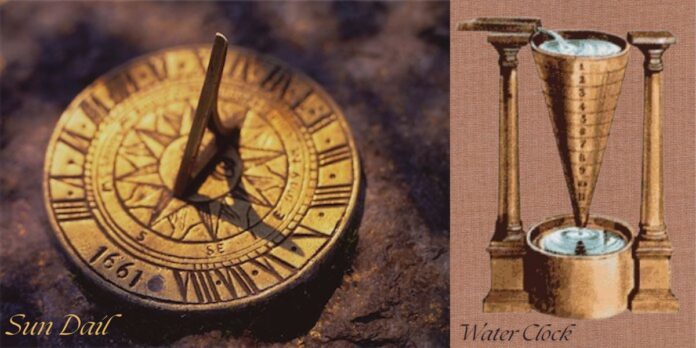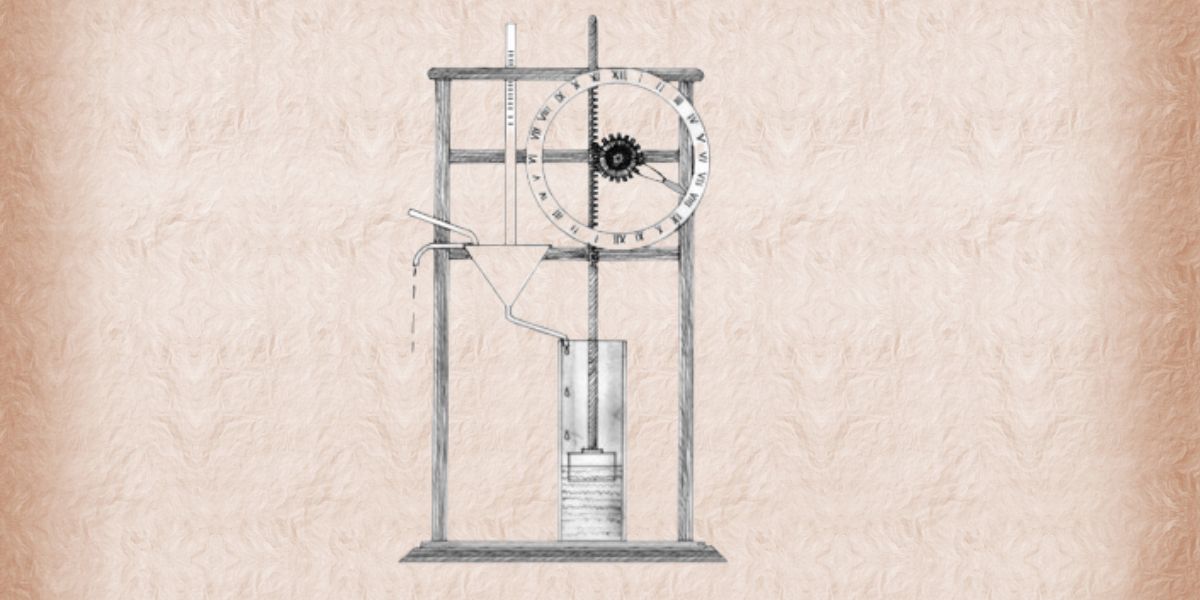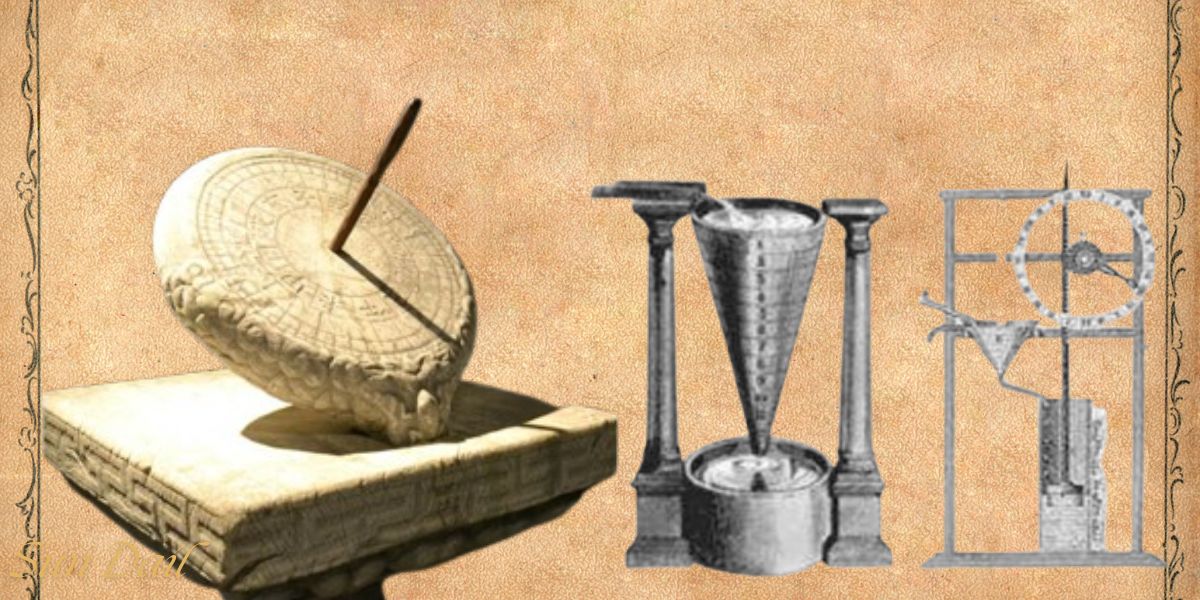Time has always been a fundamental aspect of human existence, influencing how societies function, plan, and grow. Long before the invention of modern clocks and watches, ancient civilizations relied on ingenious methods to measure the passage of time. Two of the most important devices used for this purpose were sundials and water clocks. These ancient timekeeping tools were essential to daily life, religious ceremonies, and agricultural activities, marking significant advancements in human understanding of time.
The Innovation of Sundials
Sundials are one of the earliest known timekeeping devices, originating thousands of years ago. The ancient Egyptians are credited with their development around 1500 BCE. Sundials work by casting a shadow with a stick or a pointed object, known as a gnomon. As the sun moves across the sky, the shadow shifts, marking the passage of time.
- The flat surface beneath the gnomon is marked with hour lines, indicating the time of day based on the shadow’s position. These lines were carefully calibrated based on the sun’s movement at different times of the year.
- Sundials were not only functional but symbolic. In many cultures, they represented the connection between the heavens and the Earth, as the movement of the sun dictated the rhythm of life. Ancient societies, particularly in Egypt, Greece, and Rome, relied heavily on sundials to schedule religious rituals, public events, and even daily tasks.
Variations and Advancements in Sundial Design
Over time, sundial designs evolved to accommodate geographical differences and more sophisticated timekeeping needs. Greek and Roman civilizations made significant advancements by adding seasonal hour lines. These allowed the sundials to account for the longer days of summer and shorter days of winter, providing more accurate measurements year-round.
- In regions farther from the equator, sundials became more complex. The angle of the gnomon had to be adjusted to reflect the latitude of the location, ensuring the shadow moved consistently with the sun’s position.
- One of the most famous sundials from antiquity is the Roman Horologium, built by Emperor Augustus. This massive sundial marked not just the hours of the day but also the months and seasons, indicating the advanced level of astronomical knowledge the Romans possessed.
Sundials in Public and Private Life
Sundials were often placed in public spaces, such as town squares or marketplaces, where they could be used by the entire community. They were integral to religious life, ensuring that prayers and sacrifices were performed at the correct times. In many ancient cultures, such as those of the Greeks and Romans, religious ceremonies had to take place at specific moments of the day.
- Sundials were also used by farmers to plan agricultural tasks, helping them determine the best times for planting and harvesting crops.
- Despite their widespread use, sundials had their limitations. They only worked during daylight hours and were ineffective in cloudy or overcast weather. This led to the development of alternative methods of timekeeping, one of the most important being the water clock.
Water Clocks: Timekeeping Without the Sun
Water clocks, also known as clepsydra, provided a solution to one of the major drawbacks of sundials. They could function both indoors and at night.A water clock measured time by the steady flow of water from one container to another. The rising water level in the receiving vessel would be marked at regular intervals to indicate the passage of time.
- The ancient Egyptians and Mesopotamians were among the first to use water clocks. These devices were crucial in religious and civic activities, where accurate timekeeping was required.
- Water clocks were also more versatile than sundials. While sundials required direct sunlight, water clocks worked independently of external weather conditions. However, water clocks had their own set of challenges, including the need for consistent water flow, which could be influenced by temperature and material quality.
Technical Innovations in Water Clocks
Ancient engineers devised various methods to improve the accuracy and reliability of water clocks. Greeks and Romans made significant contributions by refining water clock designs. For example, they added notches or dials that made it easier to measure the passage of time more precisely.
- The most famous water clock from antiquity is the Tower of the Winds in Athens. This multi-story building housed a large water clock, which was used for both civic and astronomical purposes.
The innovations in water clock design reflected the growing complexity of ancient societies. As cities grew and daily life became more structured, the need for reliable timekeeping devices became more pronounced.
Water Clocks in Legal and Religious Contexts
Water clocks played a key role in the legal systems of ancient Greece and Rome. In courts of law, water clocks were used to limit the time allowed for each speaker. Litigants were given a set amount of water, and when the water ran out, their speaking time was over.
- Religious ceremonies also made use of water clocks to measure the duration of prayers and sacrifices. The flow of water was seen as a metaphor for the passage of time and the transitory nature of life.
- These devices ensured that time was measured fairly and accurately, providing a sense of order and justice in legal and religious matters.
Decline of Ancient Timekeeping Devices
With the advent of mechanical clocks in the Middle Ages, the use of sundials and water clocks gradually declined. Mechanical clocks, powered by gears and pendulums, allowed for more precise and consistent timekeeping. Unlike sundials, they could function indoors and during any weather conditions.
- However, sundials and water clocks remained in use for centuries, especially in rural areas and among the less wealthy. Where mechanical clocks were not yet widespread.
- The decline of these devices marked the end of an era, but their impact on the development of timekeeping technology cannot be overstated.
The Legacy of Sundials and Water Clocks
Though they have been replaced by more advanced timekeeping technologies, sundials and water clocks remain symbols of human ingenuity and our desire to measure time. Sundials are still used today as decorative pieces in gardens and public spaces, a reminder of their importance in ancient life.
- Water clocks have inspired the development of later devices, such as hourglasses and modern timepieces. The demonstrating the lasting influence of ancient technology.
- The legacy of these devices lives on, both as functional objects and as historical. The artifacts, representing humanity’s ongoing quest to understand and measure the passage of time.
Conclusion
Sundials and water clocks were among the first tools used to track time, reflecting. The ingenuity and resourcefulness of ancient civilizations. From the sunlight-powered sundials that adorned public squares to the water clocks that kept time during. The night, these devices played an integral role in the daily. The lives of people across ancient Egypt, Greece, Rome, and beyond. Though they have been surpassed by more advanced technologies. Their legacy continues to inspire and remind us of the early achievements in human history’s quest to measure time.




